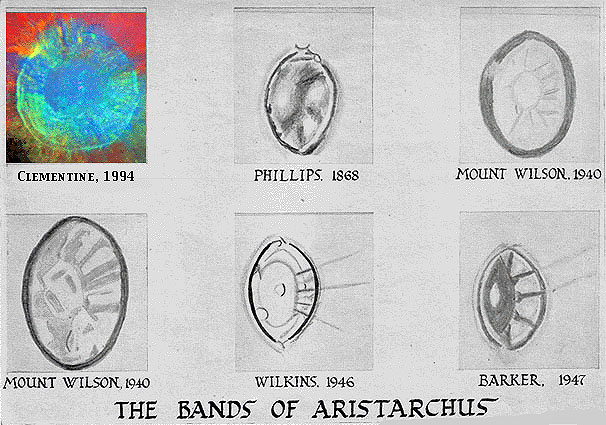November 10, 2004
"The First Real Lunar Physical change"
Image Credit: Chuck Wood |
|
"The First Real Lunar Physical change" The search for change on the Moon was the holy grail for many lunar observers from the 1700s through at least the 1950s. In 1949, in an article in the Journal of the British Astronomical Association, Robert Barker claimed that "the first real lunar physical change has been discovered by members of this Association, and that this change is proceeding in evolutionary form to-day, and can be seen through small telescopes." This momentous claim was based upon drawings such as those shown here of the gray to dark bands on the inner walls of Aristarchus. Barker stated that the bands had not been reported by Madler and Schmidt in the first half of the 19th century, and were limited in number when first noticed by Phillips in 1868. But the bands were conspicuous in the 1940s. Therefore, the bands must have developed in the last 100 years, and in fact, the more often they were observed, the more bands were seen and the more subtle changes in their character were mapped! The modern interpretation of bands was provided by high resolution Lunar Orbiter images in the 1960s, and especially the Clementine images of the 1990s. I have replaced one of the classic drawings with a multi-spectral Clementine image which clearly shows the bands to be ejecta emplaced when Aristarchus formed, perhaps 500 million years before the founding of the BAA. The blue bands are anorthositic ejecta, and the red outside the crater is pulverized mare material. Aristarchus did not change in the 1800s and 1990s. The variations in the drawings represent differences due to observer skill, observing conditions, and perhaps expectations, not changes on the Moon. Related Links: Yesterday's LPOD: Arnold - Not the Governor Tomorrow's LPOD: An Oblique View of Prom. Laplace |
|
Author & Editor: |
COMMENTS?
Register, Log in, and join in the comments.




